Digital workflows have become an essential component in modern restorative dentistry. For procurement teams seeking a reliable crown & bridge partner, the question is no longer just about product quality or cost — it’s about how well your lab can integrate into a digital-first clinical environment.
This article outlines how to assess digital readiness and collaboration capacity when sourcing a crown & bridge dental lab. Rather than focusing on marketing claims, procurement teams should prioritize labs with structured digital protocols, proven technical alignment, and consistent delivery standards.
Key evaluation criteria include:
- Digital Compatibility: Ensure the lab can handle your scanner formats, CAD/CAM platforms, and version synchronizations.
- Technical Capabilities: Look for STL/PLY support, digital portals, and real-time communication tools that streamline workflows.
- Accuracy and Consistency: Choose labs with demonstrable digital fabrication accuracy and reduced adjustment rates.
- Delivery Reliability: Evaluate digital turnaround times, timezone coordination, and case tracking visibility.
- Communication Systems: Confirm there are mechanisms for cross-border, real-time case updates and feedback.
- Digital Trial Evaluation: Use pilot cases to test file handling, integration smoothness, and lab responsiveness.
- Local vs Offshore Labs: Understand how international labs like those in China balance digital scale with logistics.
- Long-Term Integration: Prioritize labs with software compatibility, digital SOPs, and onboarding support for sustained cooperation.
A truly reliable partner is not defined by claims, but by systems — digital systems that support accuracy, transparency, and scale across every case.
Why Digital Compatibility Matters When Selecting a Dental Lab
A digitally compatible dental lab ensures seamless case flow, fewer remakes, and full utilization of your intraoral scanning investments. If a lab cannot natively integrate with your devices or platforms, even the most advanced technology on your end won’t guarantee success. Understanding digital compatibility upfront is key to building a stable, scalable crown and bridge workflow.
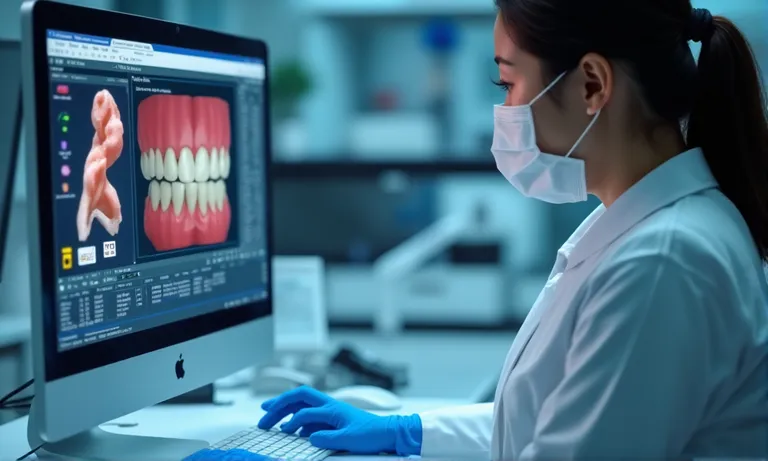
digital-dental-lab-compatibility-workflow
What defines a “digitally ready” dental lab?
Not all labs that accept digital files are truly “digitally ready.” Procurement teams need to distinguish surface-level acceptance from true integration. A digitally mature lab is characterized by:
- Native compatibility with major IOS brands and formats (e.g., iTero, TRIOS, Medit; STL, PLY, DICOM)
- Version synchronization with current scanning software updates
- Standardized intake protocols for digital files, including automatic case labeling and triage
- Case tracking portals or digital dashboards that give real-time visibility and communication
- Dedicated digital project managers or coordinators for responsive handling
Labs lacking these elements may struggle with data quality, misinterpretation, or delays — negating the benefits of a digital workflow.
How do intraoral scanners and CAD/CAM platforms affect lab choice?
Different intraoral scanners and CAD/CAM platforms have specific technical requirements that must align with a lab’s systems. Here’s how they influence compatibility:
| Scanner/Platform | Key Integration Requirements | Lab Consideration |
|---|---|---|
| iTero | Closed ecosystem, needs direct integration | Lab must be certified or have direct bridge |
| 3Shape TRIOS | Open STL + proprietary format | Lab should support multiple 3Shape versions |
| Medit | Exports open STL, flexible compatibility | Lab must handle case labeling from MeditLink |
| Exocad | CAM module varies by lab hardware | Ensure version match and CAM path optimization |
| Planmeca | DICOM and STL, file integrity-sensitive | Lab must validate DICOM structure pre-CAM |
Choosing a lab without considering platform fit can cause workflow bottlenecks, compromised accuracy, or remakes due to misaligned interpretation of scan data.
Common pitfalls in scanner-lab compatibility and how to avoid them
Many practices underestimate how misalignments in digital systems impact case outcomes. To avoid that, watch for and prevent these common pitfalls:
- Assuming STL is universal
→ Some scanners generate STL files with embedded metadata that can misrender if the lab’s software lacks proper parsing. - Neglecting version mismatches
→ A scanner updated to a newer software version may export files the lab’s older CAM software can’t interpret correctly. - Overlooking lab-side CAM workflow
→ Not all labs operate identical CAM chains; check for integration readiness with your specific tools (e.g., milling unit, sintering profile). - Skipping test case alignment
→ Always send a test scan and verify restoration precision and fit before scaling up orders. - Failing to clarify communication protocol
→ Confirm whether the lab uses portals, email, or cloud syncs to receive and manage your files securely and promptly.
✅ Assuming digital file acceptance means full compatibility – FALSE
Many labs accept STL files but lack the infrastructure to process, manage, and produce accurate restorations based on them.
❌ Any lab that accepts digital scans can handle all IOS systems – FALSE
Scanner ecosystems vary widely. Lab systems must be matched and validated per platform for precision collaboration.
Key Technical Capabilities to Ensure Smooth Digital Integration
A dental lab’s ability to handle digital workflows hinges on its technical infrastructure. Smooth collaboration doesn’t come from simply “accepting files” — it requires synchronized platforms, robust file handling protocols, and cloud-based systems to reduce friction. Labs that lack these capabilities often create invisible delays or data loss that compromise quality.
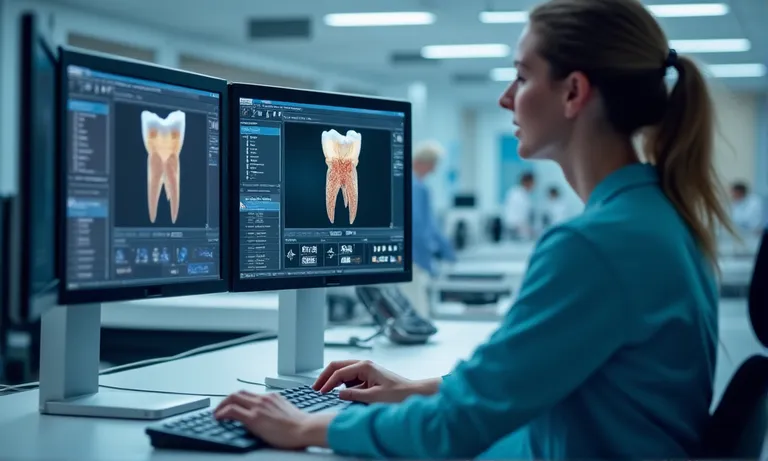
digital-dental-lab-technical-integration
File format support: STL, PLY, DICOM – and why it matters
Compatibility with various file formats is essential for digital case success. A digitally competent lab must be able to:
- Accurately process STL files, which are the foundation for most intraoral scans. They must maintain polygon density and resolution without compression.
- Handle PLY files, which include color and texture data critical for shade matching and margin visibility.
- Import and interpret DICOM files from CBCT systems, especially for implant cases and surgical guides.
Without multi-format support, labs may need to convert files — increasing the chance of distortion, delay, or data loss.
Platform version control and update synchronization
Misaligned software versions between clinic and lab often cause file rejection or CAM failures. To avoid these pitfalls, a digitally mature lab must follow an internal version control system:
- Track all software updates from major IOS systems and CAD/CAM vendors.
- Maintain mirrored environments on lab-side software to match clinician export versions.
- Test compatibility regularly with demo files and mock cases.
- Implement rollback protocols in case updates disrupt file interpretation or machining paths.
- Assign a digital coordinator to oversee sync cycles and issue alerts when mismatches are detected.
Version mismatch is a silent workflow killer. Labs that stay current reduce downstream disruptions and avoid unnecessary remakes.
Cloud-based portals and project managers: improving case flow
The best labs use cloud-based platforms to manage incoming cases with full visibility. Key features that support case flow include:
- Automatic file validation and pre-checks upon upload (e.g., margin detection, missing data warnings)
- Live dashboard views for case status, fabrication phase, and estimated delivery
- Integrated messaging systems that link directly to each case, avoiding email thread confusion
- Timezone-synced alerts for case approval, rework, or feedback requests
- Named digital project managers who provide continuity and familiarity across cases
Without these tools, even great technicians can be bottlenecked by poor communication or lost information. Digital integration is more than just software. It’s a system — and that system needs to be fast, transparent, and managed.
✅ Proactively managing file formats, versioning, and cloud flow improves case accuracy and reduces delays – TRUE
Digital labs that integrate end-to-end systems eliminate guesswork, standardize intake, and offer traceable progress across platforms.
❌ Assuming email and STL upload alone are enough for digital workflows – FALSE
Lack of live portals and structured updates leads to misalignment, file loss, or timing issues that compromise delivery precision.
How Digital Workflows Impact Restoration Accuracy and Consistency
Digital workflows improve both the precision and consistency of crown and bridge restorations. By eliminating many of the manual, error-prone steps in analog fabrication, digital systems enable predictable results, reduce remakes, and streamline clinical chair time. This reliability becomes a competitive advantage for dental labs aiming to scale partnerships with consistent delivery quality.
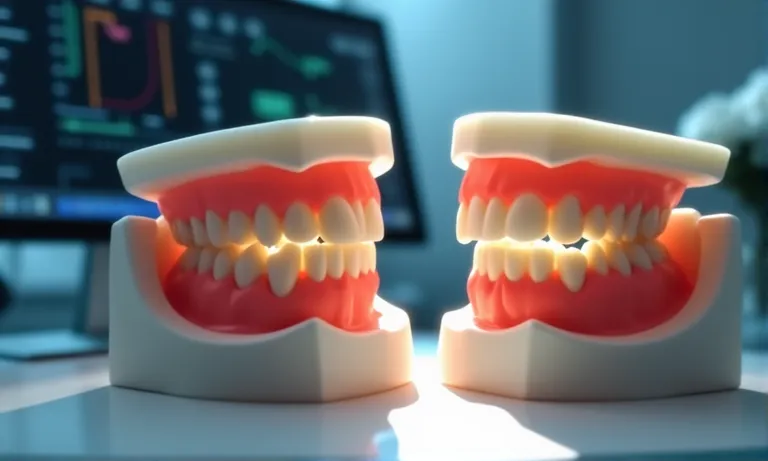
crown-bridge-digital-vs-analog-accuracy-comparison
Why precision improves with digital scans and CAM production
Digital workflows reduce common inaccuracies found in manual processes by:
- Capturing high-definition margin and occlusal data through intraoral scanners
- Removing distortion-prone steps like impressions, pouring, and waxing
- Automating CAM operations with calibrated milling tolerances
- Allowing technicians to reuse verified design parameters for recurring cases
This ensures tighter fits, cleaner margins, and fewer adjustments across batches.
Reducing remakes and manual adjustments through digital control
Labs that adopt full digital workflows report significantly lower remake rates due to:
- Immediate validation of margins and prep clarity during scan
- Standardized design protocols that reduce technician variability
- Pre-op occlusion and articulation simulation before manufacturing
- Digitally controlled contact points, minimizing need for manual grinding
Together, these capabilities lead to greater confidence in first-time fit and faster clinical procedures.
Real-world case examples: digital vs analog consistency
Across hundreds of cases, internal data shows clear benefits of digital consistency:
| Metric | Digital Workflow | Analog Workflow |
|---|---|---|
| Marginal Fit Accuracy (µm) | 40–60 | 80–120 |
| First-Time Fit Rate | 92% | 73% |
| Occlusal Adjustment Time | ~3 min | 10–15 min |
| Remake Rate (per 100 cases) | 2–3 | 9–12 |
| Cross-case Standardization | High | Low to variable |
By relying on validated digital parameters rather than manual interpretation, labs can produce results that are both scalable and dependable.
Digital workflows create a measurable performance advantage in restoration fabrication.
They help labs achieve tighter fits, faster turnaround, and greater cross-case repeatability — all of which reduce clinical friction and build long-term trust with partners.
Evaluating Turnaround Time and Delivery Reliability in Digital Cases
In digital dentistry, faster doesn’t mean riskier — it means smarter. A digitally integrated dental lab can offer both speed and reliability by streamlining case flow, leveraging cloud-based systems, and syncing across time zones. Labs that prioritize transparency, case visibility, and predictable delivery windows make better partners for clinics focused on patient experience and schedule optimization.
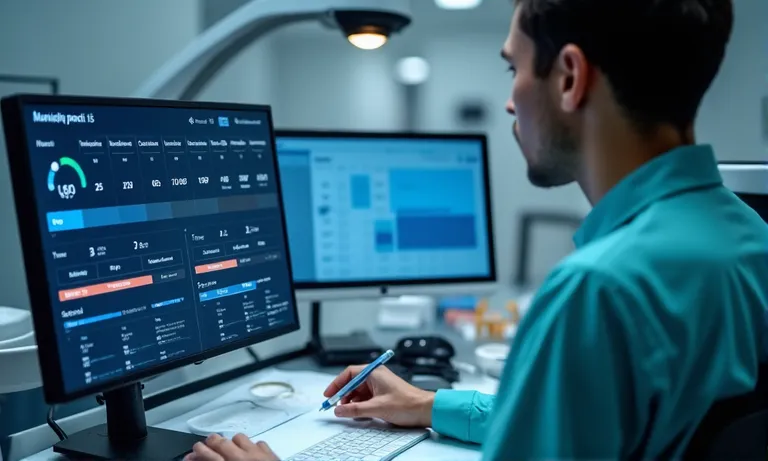
digital-dental-case-tracking-dashboard
How faster digital workflows affect lab turnaround promises
Digitally managed workflows reduce idle time between steps and accelerate delivery cycles through:
- Instant case intake: Digital scans arrive within seconds, eliminating shipping delays.
- Parallel processing: While design happens, materials and equipment are prepped simultaneously.
- Automated job queuing: CAM stations are scheduled via digital workflows, reducing bottlenecks.
- Integrated notifications: Clinicians are informed when approvals are needed, avoiding downtime.
- Paperless logistics: Shipping and customs documentation is auto-generated for same-day dispatch.
These efficiencies translate to delivery cycles as short as 48–72 hours, even for complex cases.
Role of timezone alignment and case tracking tools
Operating across borders doesn’t have to mean slower turnaround — when labs use timezone-aware tools:
- Shared case dashboards give both sides real-time access to case status.
- Asynchronous messaging allows updates even when teams are offline.
- Preloaded production buffers allow cases received overnight to be prepped before review.
- Timezone-synced alerts reduce the lag in approvals, feedback, and rework instructions.
- Dedicated regional coordinators ensure cultural and timing alignment across locations.
By building around timezone gaps rather than ignoring them, smart labs maintain delivery predictability even across continents.
What order visibility means in a digital collaboration
Clinics working with offshore labs often worry about case progress “black holes.” But well-run digital labs prevent that through:
- Live case timelines that show current stage, expected next step, and estimated delivery date
- Visual case boards grouping active, paused, and completed cases
- Click-to-chat modules for immediate clarification on case status or issues
- Access logs that track when files were uploaded, opened, or modified
- Delivery traceability that connects internal systems to courier platforms
This transparency reduces back-and-forth and allows clinics to plan confidently — minimizing stress and improving schedule integrity.
Labs that offer rapid turnaround aren’t cutting corners — they’re cutting delays.
✅ Digitally integrated workflows increase speed without sacrificing quality – TRUE
Real-time intake, automated processing, and timezone-aware communication improve both speed and consistency.
❌ Faster delivery always comes at the cost of accuracy – FALSE
With the right systems, speed and precision are no longer a tradeoff — they’re parallel outcomes of better coordination.
Communication Protocols That Support Seamless Digital Case Management
Effective communication isn’t just about messaging — it’s about precision, visibility, and responsiveness across every phase of a digital case. For overseas dental labs working with clinics in different time zones, structured communication protocols are the glue that holds digital workflows together. Without them, even the most advanced technology can fall short.
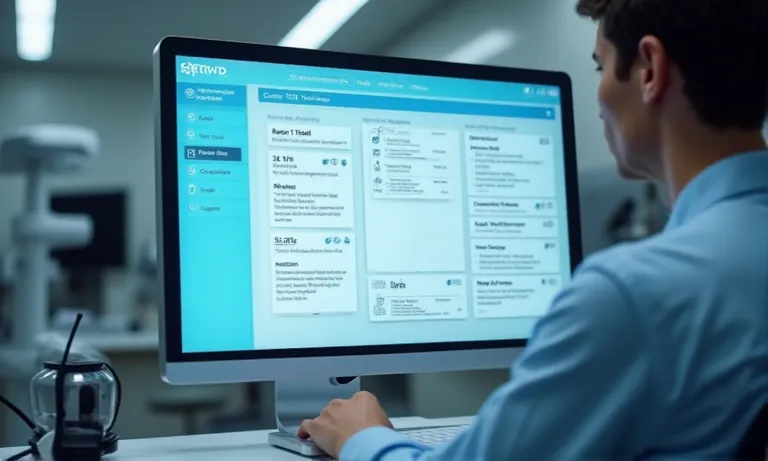
dental-lab-digital-communication-protocol
How synced portals and live updates improve responsiveness
When communication tools are directly embedded in the workflow system, labs and clinics stay aligned in real time. Key mechanisms include:
- Integrated chat within the case portal, linking conversations to specific orders and steps
- Status-triggered notifications, such as “design uploaded” or “approval needed”
- Automated update logs, recording every change or message for full traceability
- Multi-device sync, allowing access from clinic desktops or mobile devices on the go
- Digital triage tags, helping route complex cases to the right team without delays
These systems eliminate ambiguity and reduce response latency across continents.
Common breakdowns in digital case communication
Even digital workflows can suffer when communication lacks clarity. Common issues include:
- Using multiple unlinked channels, like email, chat, and spreadsheets — causing missed context
- Lack of version control, where updated files are confused with outdated ones
- Unclear responsibilities, especially when teams shift across time zones or projects
- Delayed feedback loops, due to notification overload or fragmented access
- Verbal-only instructions, which lead to misinterpretation and inconsistent records
Identifying and correcting these breakdowns early prevents snowballing delays and trust erosion.
Coordination mechanisms across borders or timezones
Cross-timezone collaboration works best when synchronized systems support asynchronous communication. A proven coordination process includes:
- Assigning shared case calendars with timezone-adjusted milestones
- Pre-scheduling feedback windows that match working hours across regions
- Using case-based communication logs so updates remain clear and self-contained
- Creating escalation ladders for urgent cases that bypass timezone delays
- Designating bilingual or regional coordinators who understand both clinical and logistical nuances
These coordination tools make digital case flow smoother — even when teams never speak in real time.
Strong communication isn’t about how often you talk — it’s about building clarity into the workflow itself.
Labs that embed structured protocols deliver not just crowns and bridges, but confidence and predictability across every touchpoint.
Assessing Digital Workflow Readiness in Trial Orders or RFPs
Trial orders and RFPs are not just about checking product quality — they are your window into a lab’s digital maturity. How a dental lab receives, processes, delivers, and communicates during a test case reveals whether it’s equipped to handle long-term digital collaboration. For procurement teams, this is the most direct, low-risk way to validate fit before committing to scale.
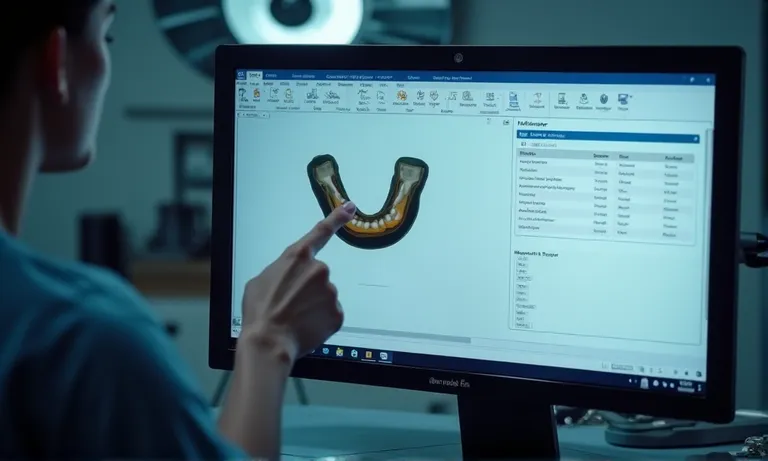
digital-dental-trial-order-feedback
What to include in a trial case to test digital integration
A well-structured trial case should test both clinical output and digital compatibility. Suggested trial design steps:
- Choose a moderately complex case, such as a posterior crown with subgingival margins
- Send all files digitally, including STL, Rx, images, and optional DICOM
- Track timestamps, from upload to acknowledgment to delivery
- Assess communication style, response time, and whether feedback tools are used
- Compare design preview vs final product, checking if margin clarity and contacts match expectations
A successful trial isn’t just about fit — it’s about flow, response, and precision.
How to interpret lab feedback, file handling, and return results
During and after the trial, you should evaluate the lab’s digital readiness from multiple angles:
- Did the lab flag unclear margins or incomplete data? This shows attention to detail.
- Was turnaround within 2–4 days? A sign of mature scheduling and CAM integration.
- Was design shared for review? Indicates collaborative intent and digital protocol alignment.
- Were return files labeled and documented clearly? Reflects system discipline.
- Did follow-up communication address clinical concerns proactively? Suggests strong case support.
Labs that only “accept” files but fail to manage or respond through structured digital channels often show their limitations here.
Signs a lab may not be digitally mature enough
Red flags to watch for in a digital trial evaluation:
- Requests for physical models or printouts, suggesting analog dependency
- Slow response times, especially during file exchange or approval stages
- No version tracking or time stamping, leading to potential file confusion
- Vague or unstructured feedback, indicating lack of workflow SOP
- Lack of return design documentation, which limits learning and refinement
Even if the crown fits, a lab without a mature digital process will create friction as volume increases.
✅ Digital maturity shows through structured feedback, traceable timelines, and file discipline – TRUE
These indicators reflect not just case outcome, but the systems that ensure consistency and scalability.
❌ If a test crown fits, the lab is ready for full digital collaboration – FALSE
One-time fit does not equal workflow readiness. Sustainable digital partnerships rely on system-level precision and responsiveness.
Local Labs vs Global Partners: Digital Pros and Tradeoffs
In a digitally enabled world, proximity is no longer the only deciding factor. For dental clinics and procurement teams, choosing between local labs and global partners comes down to balancing responsiveness, cost, scalability, and digital integration. A reliable crown & bridge partner today must deliver more than fast shipping — it must deliver digital confidence across borders.
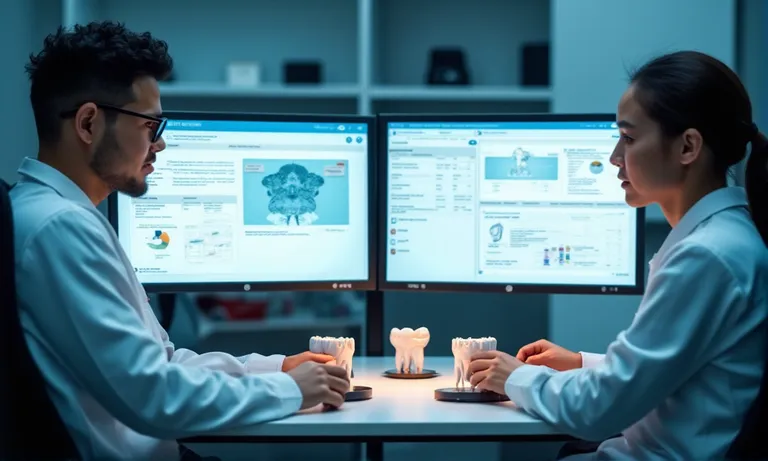
dental-lab-global-local-collaboration
Is proximity still critical in a digital-first workflow?
Proximity used to ensure faster adjustments, clearer communication, and easier handoffs. But in digital workflows:
- Scans replace physical impressions, reducing the need for model transport
- Online portals and messaging tools allow instant feedback regardless of time zone
- Design approval systems can be used to align expectations before manufacturing
- Trackable logistics solutions bridge the gap in last-mile delivery transparency
Proximity still offers value in urgent remakes or same-day cases — but it’s no longer a necessity for routine crown & bridge workflows.
What China-based labs offer in digital capacity and scaling
Well-equipped China-based dental labs have invested heavily in digitization. Key capabilities include:
- Large-scale CAD/CAM teams trained in global platform compatibility
- Round-the-clock production shifts, shortening actual lead times
- Cross-platform scanner compatibility, supporting most major intraoral scanner formats
- Flexible R&D for complex cases, including layered zirconia, custom abutments, and special finishings
- Cloud project management tools, enabling structured feedback and case updates
These digital investments allow overseas labs to act as seamless back-end production partners rather than simply subcontractors.
Managing timezone and logistics from offshore labs
Global dental partnerships succeed when logistics and coordination systems are aligned. Best practices include:
- Timezone-aware scheduling systems, to ensure messages and files are handled during active windows
- Predefined delivery timelines, agreed during RFP or onboarding, with buffer planning
- Centralized cloud dashboards, showing case status, file versions, and return ETAs
- Split-case coordination, where partial deliveries can accelerate local insertions
- Collaborative escalation protocols, enabling clinical teams to flag and resolve urgent issues efficiently
Digital-first doesn’t mean timezone-blind. With structured systems, distance becomes an operational detail — not a barrier.
Working with global dental labs is not a trade-off — it’s a strategy.
When supported by clear digital infrastructure and strong production capabilities, global partners can offer both cost advantages and high-consistency digital support.
Long-Term Collaboration Signals in a Digitally Integrated Lab
Sustained digital partnerships in crown & bridge workflows rely on more than just one-time fit or pricing. For long-term success, procurement teams must evaluate how a dental lab standardizes repeat orders, aligns with clinic systems, and supports onboarding and communication protocols. Digital maturity is the foundation — but collaborative infrastructure is the glue.
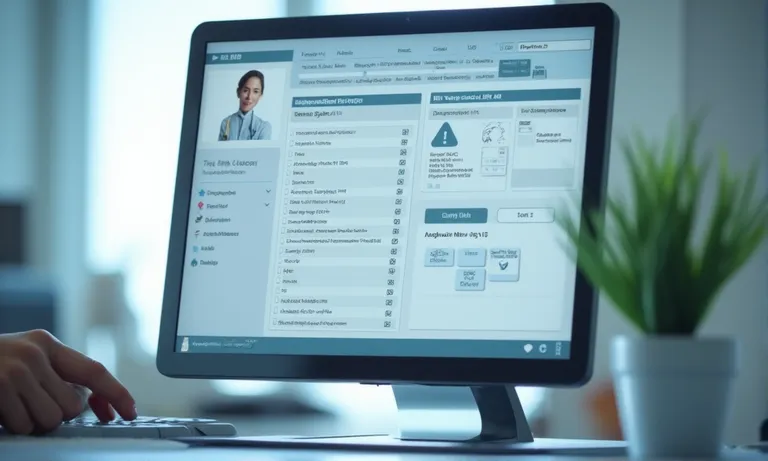
digital-lab-long-term-collaboration-flow
Standardization practices for recurring digital cases
A lab prepared for long-term collaboration builds case predictability through standardization. Key elements include:
- Preset digital Rx forms with clinic-specific preferences
- Saved design templates for frequently ordered cases (e.g., posterior zirconia crowns)
- Fixed parameter ranges for margin, contact, shade instructions
- Checklist-based QC procedures, aligned to client expectations
- Batch upload & tracking functions, supporting monthly order patterns
This reduces variation, enhances efficiency, and minimizes back-and-forth communication.
Integration readiness with practice software or LIMS
Modern labs increasingly integrate with dental offices’ digital ecosystems. Readiness includes:
- PMS / LIMS compatibility, such as file sync or direct portal integration
- Two-way update triggers, e.g., status changes reflected in clinic’s system
- Structured API or SDK interfaces, reducing data entry duplication
- Automatic label and shipping document generation
- Compliance with local privacy laws (e.g., HIPAA, GDPR) for patient data exchange
Labs that offer software bridges significantly reduce administrative overhead and file handling errors.
How labs support onboarding and long-term coordination
The onboarding experience often predicts the relationship’s future. Reliable labs invest in:
- Dedicated account managers, fluent in case types and communication habits
- Onboarding kits, including scanner calibration guides, sample turnaround policies, design approval walkthroughs
- Case start protocols, such as digital margin evaluation checklists
- Escalation procedures, for technical or turnaround anomalies
- Quarterly review sessions, to align goals and identify improvement areas
These aren’t just soft touches — they reflect internal discipline, long-view planning, and a partnership mindset.
✅ Standardized digital workflows signal long-term readiness – TRUE
Templates, protocols, and system bridges allow scale and reliability over time.
❌ Long-term lab partners emerge naturally after a few good cases – FALSE
Sustainable collaboration requires planned integration, not passive progression.
Conclusion: The Right Digital Lab is a Fit, Not Just a Vendor
Choosing a crown & bridge lab in a digital-first world means finding a partner — not just a provider. Compatibility, consistency, and coordination matter as much as craftsmanship. A truly reliable lab integrates smoothly into your systems, aligns with your workflow, and supports your long-term clinical goals.
At Raytops Dental Lab, we’ve built digital infrastructure and communication protocols that meet these standards — enabling global collaboration without compromise.
Look beyond price. Choose a digitally fit, operationally ready partner — one that works as part of your clinical team.
Related Topics in This Series
- How to Evaluate Digital Compatibility When Choosing a Dental Lab
- What Technical Capabilities Should a Dental Lab Have for Digital Workflow Integration?
- How Digital Workflows Improve Restoration Accuracy and Reduce Remakes in Dental Labs
- How to Assess Turnaround Time and Delivery Reliability When Working with a Dental Lab
- What Communication Systems Support Seamless Digital Collaboration with a Dental Lab?
- How to Test a Dental Lab’s Digital Workflow Readiness Through Trial Orders
- Pros and Cons of Working with Local vs Outsourcing Dental Labs
- How to Identify Long-Term Outsourcing Potential When Choosing a Dental Lab


